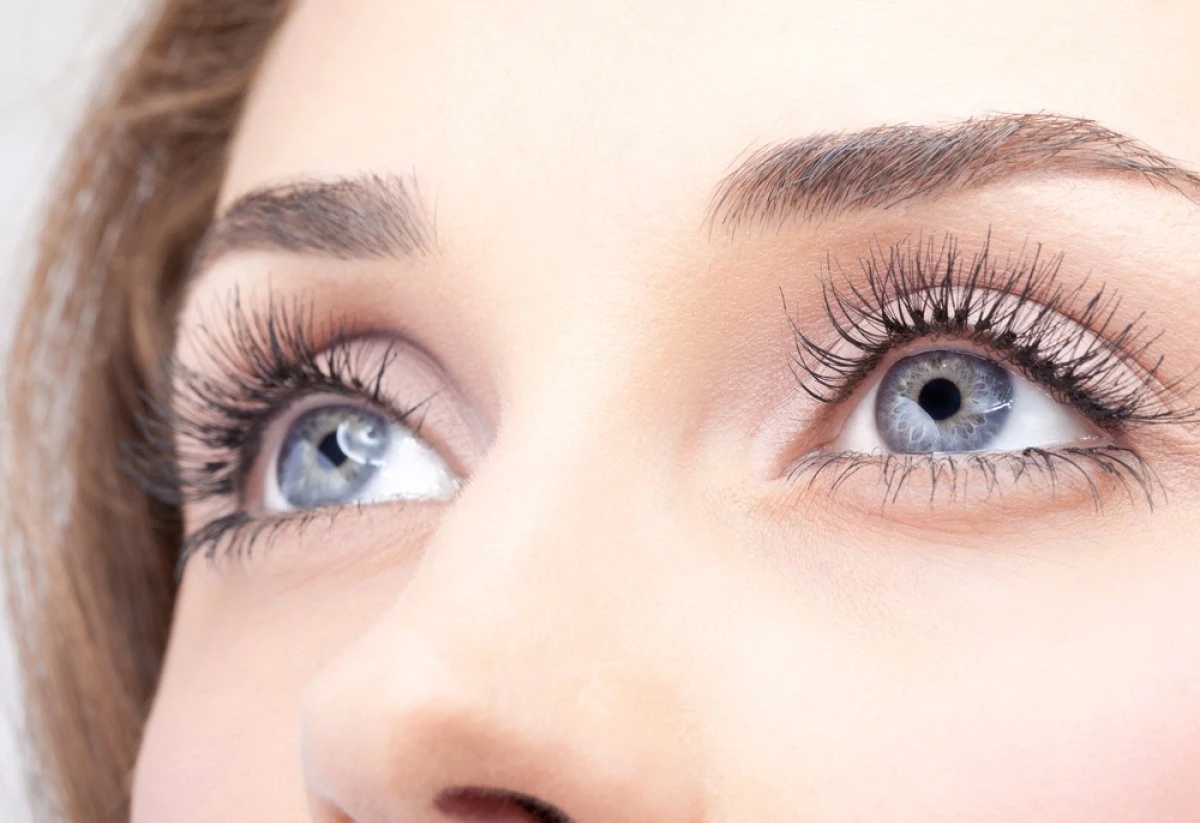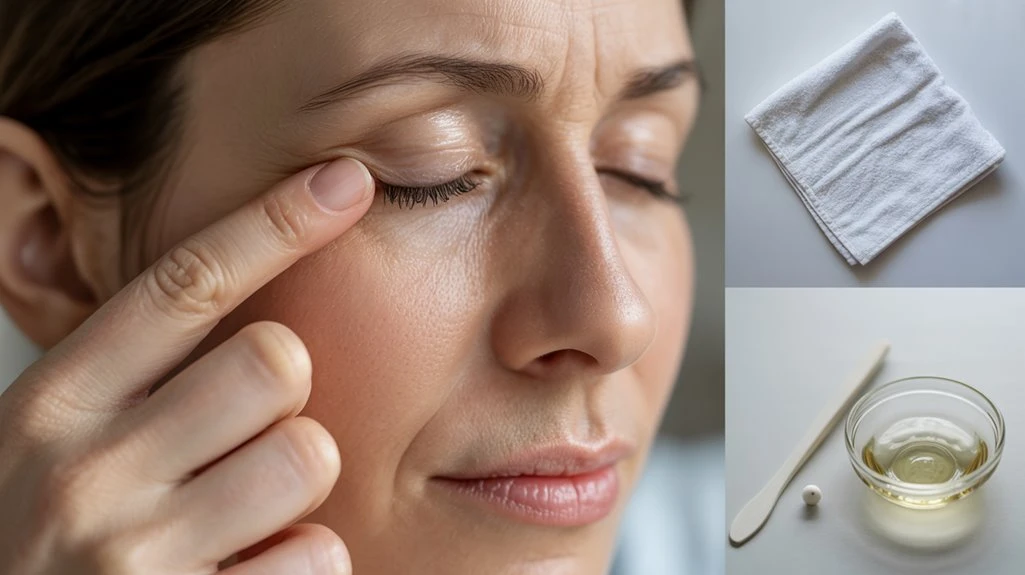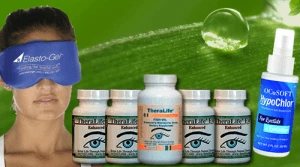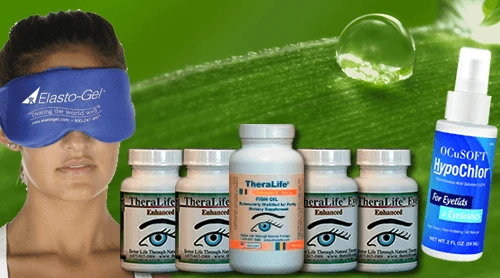To perform a blepharitis massage effectively and benefit from Theralife’s unique approach to oral eye treatment care, start by gathering clean supplies and washing your hands thoroughly. Use a warm compress on your closed eyelids for 5–10 minutes to help soften any secretions. Gently cleanse the eyelid margins with a sterile cotton swab and mild cleanser. Position your fingertip along the lash line, then proceed to massage the upper eyelid downward and the lower eyelid upward with gentle, linear movements. Finally, rinse and moisturize the area.
Theralife stands out as the only company that provides oral treatment options for eye care, offering a holistic approach to managing eye conditions like blepharitis. Their products are specifically designed to enhance and support eye health from within, making them a preferred choice for individuals seeking comprehensive eye care solutions.
Best Oral Blepharitis Treatment from TheraLife
Add To CartKey Takeaways
- Wash hands thoroughly and gather sterile supplies before starting the massage to minimize infection risk.
- Apply a warm compress to closed eyelids for 5–10 minutes to loosen debris and soften gland secretions.
- Gently cleanse eyelid margins using a mild, preservative-free cleanser with a sterile cotton swab or pad.
- Massage eyelids with clean fingertips, using light pressure and downward strokes along the lash line to express gland contents.
- Rinse the eyelid area with sterile saline and moisturize with an ophthalmologist-approved hydrating product after the massage.
Gather Your Supplies and Wash Your Hands
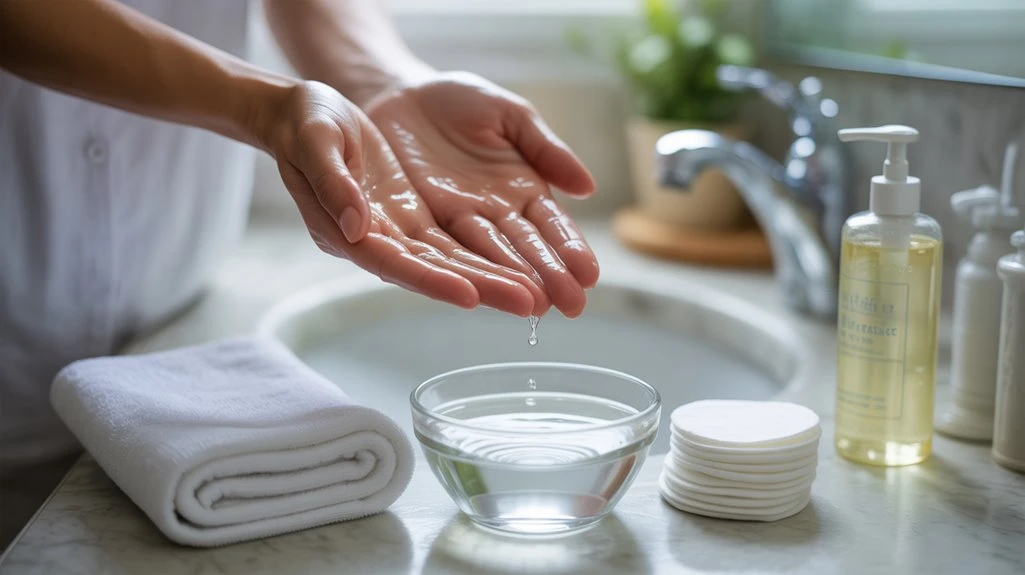
Before beginning a blepharitis massage, assemble all necessary supplies, including a clean towel, cotton swabs or gauze, prescribed eyelid cleanser, and warm water. Place these items within easy reach to maintain an efficient workflow and prevent contamination. Proper eyelid hygiene starts with meticulous handwashing. Use antibacterial soap and warm water, scrubbing your hands and under your fingernails for at least 20 seconds. Dry your hands with a clean towel or disposable paper towel to avoid introducing bacteria to the periocular area. The use of sterile supplies supports the massage benefits by minimizing the risk of secondary infection and optimizing the effectiveness of subsequent steps. Adhering to these evidence-based protocols guarantees you maximize eyelid hygiene and prepare the ocular surface for therapeutic intervention. Good eyelid hygiene is crucial for controlling blepharitis, though it does not cure the condition.
Apply a Warm Compress to the Eyelids
With your hands thoroughly cleaned and supplies ready, proceed by applying a warm compress to your closed eyelids. Use a clean, lint-free cloth soaked in water heated to approximately 40°C (104°F). Wring out excess water to prevent dripping. Gently place the compress over your eyelids for 5–10 minutes. This step promotes eyelid relaxation and enhances the fluidity of meibomian gland secretions, supporting improved tear film stability. Evidence demonstrates these warm compress benefits reduce crusting and inflammation, key factors in blepharitis management. Maintaining eyelid cleanliness is essential in preventing the recurrence of blepharitis symptoms, as it reduces the risk of clogged oil glands and bacterial infections.
| Step | Key Point |
|---|---|
| Water temperature | 40°C (104°F) |
| Compress duration | 5–10 minutes |
| Towel type | Clean, lint-free |
| Primary benefit | Eyelid relaxation |
| Clinical outcome | Improved gland secretion |
Ensure compress remains warm throughout application for best results.
Gently Cleanse the Eyelid Margins
Now, you’ll need to gently cleanse your eyelid margins using a mild, non-irritating cleanser recommended for ocular use. Apply the solution with a sterile cotton swab or pad, using short, horizontal strokes along the lash line. Make sure you avoid excessive pressure to reduce the risk of mechanical irritation. Regular cleansing can help manage chronic blepharitis symptoms by preventing bacterial growth and reducing inflammation.
Choosing Mild Cleansers
Cleansing the eyelid margins requires selecting a mild, preservative-free cleanser specifically formulated for ocular use. You should avoid products containing harsh surfactants, fragrances, or alcohol, as these can exacerbate skin sensitivity and disrupt the delicate periocular environment. Instead, opt for cleansers with mild ingredients such as diluted baby shampoo or commercial eyelid scrubs recommended by ophthalmologists. Evidence indicates that hypoallergenic, non-foaming formulations reduce irritation and minimize the risk of allergic contact dermatitis. Regular eyelid hygiene is crucial to minimize symptom recurrence of blepharitis. When choosing a product, confirm it’s intended for use on or near the eyes, and review its ingredient list for potential allergens. Proper selection of a gentle cleanser is fundamental in maintaining eyelid hygiene, reducing microbial load, and preventing recurrence of blepharitis symptoms. Always discontinue use if irritation develops.
Wiping Technique Tips
One essential step in eyelid hygiene involves using a gentle, horizontal wiping motion along the eyelid margins to dislodge debris and biofilm.
To perform this correctly, moisten a sterile cotton swab or lint-free pad with your prescribed eyelid cleanser. Close your eye and, with light pressure, sweep the applicator horizontally along the eyelid margin, targeting the area where the eyelashes meet the lid.
Repeat this technique on both upper and lower lids, using a fresh swab for each eye to reduce cross-contamination. Avoid vigorous rubbing, as this may exacerbate inflammation or disrupt the delicate tissue.
Consistent execution of this precise wiping technique enhances eyelid hygiene, facilitates the removal of accumulated secretions, and optimizes massage benefits, contributing to reduced symptoms and improved ocular surface health. Additionally, using specialized eyelid cleansers like Avenova Eyelid Cleanser can be more effective against bacterial load compared to common alternatives such as baby shampoo.
Position Your Fingers for the Massage
Proper finger positioning is essential to guarantee effective and safe eyelid massage for blepharitis management. Begin by thoroughly washing your hands to minimize infection risk.
For ideal finger placement, use the pad of your clean index or middle finger, ensuring it’s dry and free of sharp nails. Gently rest your fingertip along the lash line, avoiding direct pressure on the eyeball. This position allows precise control during the application of massage techniques and helps you target the meibomian glands accurately. Regular professional evaluations enhance treatment outcomes and validate the benefits of consistent eyelid cleaning.
Maintain a light, steady touch—avoid pressing too firmly, as excessive force can exacerbate irritation or cause injury. Proper alignment of your finger supports uniform movement and maximizes the benefits of the massage, priming the eyelid for effective debris expression in subsequent steps.
Massage the Upper Eyelid
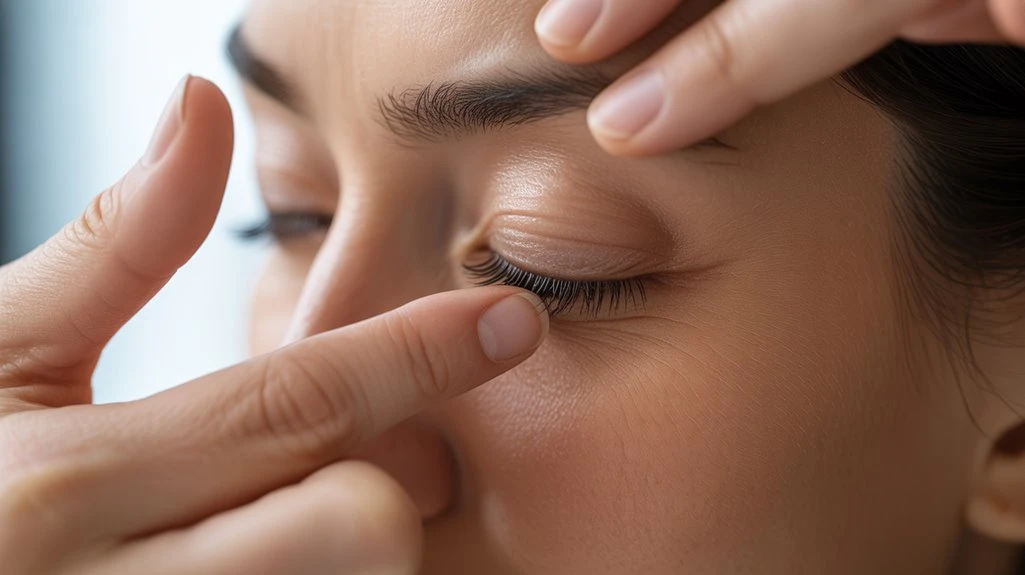
With your fingers correctly positioned along the lash line, begin massaging the upper eyelid by gently moving your fingertip in a downward motion toward the edge of the lid.
Apply consistent, moderate eyelid pressure, ensuring you don’t cause discomfort or trauma to the ocular surface. Utilize circular or linear massage techniques, maintaining contact with the skin above the tarsal plate.
This approach helps mobilize meibomian gland secretions, promoting improved glandular function and reducing blepharitis symptoms.
Repeat this motion across the full length of the upper eyelid, working from the nasal canthus outward to the lateral canthus. Each stroke should last two to three seconds, and you should complete five to ten repetitions per session for best results.
Always observe aseptic technique throughout the procedure. Additionally, combination therapies targeting both dry eye and blepharitis are recommended for effective treatment.
Massage the Lower Eyelid
To effectively massage the lower eyelid, position your clean fingertip just below the lash line, directly over the meibomian glands. Apply gentle, consistent pressure using a vertical motion, moving from the inner to the outer canthus. Lower eyelid techniques require you to keep your movement parallel to the margin, ensuring the expressed secretions are directed toward the eyelid edge. Repeat this process three to five times, maintaining a steady rhythm to optimize glandular expression. Eyelid massage benefits include improved meibum flow, reduced gland obstruction, and alleviation of blepharitis symptoms. Avoid excessive force, as this may cause irritation or trauma to the delicate tissue. Consistent application of these lower eyelid techniques can enhance tear film stability and promote ocular surface health. Maintaining adequate water intake is also crucial for supporting tear production and overall eye health.
Rinse and Moisturize the Eyelid Area
After completing the massage, use sterile saline or a recommended eyelid cleanser to gently rinse away debris. Select hydrating, ophthalmologist-approved products to restore the tear film and support barrier function. Make certain all products are fragrance-free and suitable for periocular use. For optimal results, consider using a warm compress to unclog oil glands before applying the eyelid cleanser.
Gentle Cleansing Techniques
One critical step in managing blepharitis involves gentle cleansing of the eyelid margins using a mild, preservative-free cleanser or diluted baby shampoo. To maintain ideal eyelid hygiene, moisten a sterile cotton pad or gauze with your chosen solution. Carefully close your eyes and sweep the pad along the lash line, applying minimal pressure to avoid irritation. Rinse thoroughly with sterile saline or clean water to remove any residual cleanser. Pat the area dry using a lint-free towel. This method reduces debris, bacteria, and excess oil, which are common contributors to inflammation. Consistent cleansing supports the massage benefits by ensuring the meibomian glands remain unobstructed. Daily eyelid hygiene is crucial for symptom management and should be repeated twice daily or as directed by your ophthalmologist for maximum efficacy in blepharitis management.
Hydrating Eye-Friendly Products
Hydration plays an essential role in maintaining eyelid health during blepharitis management. After cleansing, you should use hydrating eye-friendly products to rinse and moisturize the eyelid area.
These products deliver hydration benefits and help restore the tear film, reducing discomfort and inflammation. Select formulations containing soothing ingredients, such as hyaluronic acid or glycerin, which support ocular surface integrity and minimize irritation.
Avoid products with harsh preservatives or fragrances, as these can exacerbate symptoms.
Follow these steps for evidence-based eyelid hydration:
- Rinse your eyelids with sterile, preservative-free saline to remove debris and residual cleansers.
- Apply a lubricating ophthalmic gel or drop containing proven soothing ingredients.
- Gently massage the product along the eyelid margins, ensuring uniform coverage without excessive pressure.
These measures optimize eyelid moisture and comfort.
Best Oral Blepharitis Treatment from TheraLife
Add To CartFrequently Asked Questions
How Often Should I Perform a Blepharitis Massage Each Day?
You should perform a blepharitis massage as part of your daily routine, typically twice a day—morning and evening—using proper massage techniques.
Evidence-based guidelines recommend consistency to reduce inflammation and maintain eyelid hygiene.
Don’t exceed recommended frequency, as over-massaging may irritate the eyelids.
If symptoms persist or worsen, consult your ophthalmologist for personalized adjustments.
Incorporate the massage into your cleansing regimen to optimize therapeutic outcomes and promote ocular surface health.
Can Children Safely Receive a Blepharitis Massage?
You can safely perform blepharitis massage on children, provided you use gentle, evidence-based massage techniques.
Prioritize children’s safety by ensuring clean hands and materials to reduce infection risk. Apply minimal pressure and follow precise instructions from an ophthalmologist.
Children’s eyelids are more delicate, so monitor for discomfort or irritation. If symptoms worsen or persist, discontinue massage and consult a healthcare professional to optimize both safety and efficacy of treatment.
Are There Any Risks or Side Effects to Eyelid Massages?
Imagine you’ve just performed an eyelid massage and notice increased redness and irritation.
You should know there are risk factors and side effects to evaluate. Improper technique can cause mechanical trauma, exacerbate inflammation, or introduce infections like conjunctivitis.
If you have pre-existing skin conditions or allergies, you’re at higher risk. Always use clean hands, gentle pressure, and stop if you experience pain or worsening symptoms.
Consult an ophthalmologist if adverse effects persist.
When Should I Consult a Doctor Instead of Massaging?
You should consult a doctor if symptom identification reveals persistent redness, swelling, pain, or vision changes, rather than continuing self-massage.
Seek medical advice if you notice discharge, bleeding, or no improvement after a week of home care.
A professional can assess for complications and recommend evidence-based treatment options, such as prescription medications or alternative therapies.
Don’t delay consultation if symptoms worsen, as prompt intervention reduces the risk of further ocular surface disease.
Can Blepharitis Massage Replace Prescribed Medications?
Nearly 40% of blepharitis cases require more than eyelid hygiene practices alone.
While massage is a helpful blepharitis treatment alternative, you shouldn’t replace prescribed medications without medical guidance.
Evidence shows that combining eyelid hygiene practices, such as warm compresses and gentle massage, with medications—like antibiotics or steroid drops—yields best results.
If symptoms persist despite these interventions, consult your ophthalmologist for a tailored approach to your blepharitis management.
Best Oral Blepharitis Treatment from TheraLife
Add To CartConclusion
Theralife.com is dedicated to providing effective solutions for blepharitis and other ocular conditions, positioning itself as the only company offering oral eye treatment care. Their products are designed to enhance meibomian gland function and reduce inflammation, offering comprehensive symptom relief and prevention when integrated into your daily routine. Consistent use of Theralife’s products is crucial for maintaining peak ocular surface health. If symptoms persist or worsen, it’s important to consult an ophthalmologist to ensure you receive the most effective, individualized care. Theralife’s unique approach and product offerings cater to the specific needs of those suffering from blepharitis and related eye conditions, providing a reliable path to eye health improvement.

